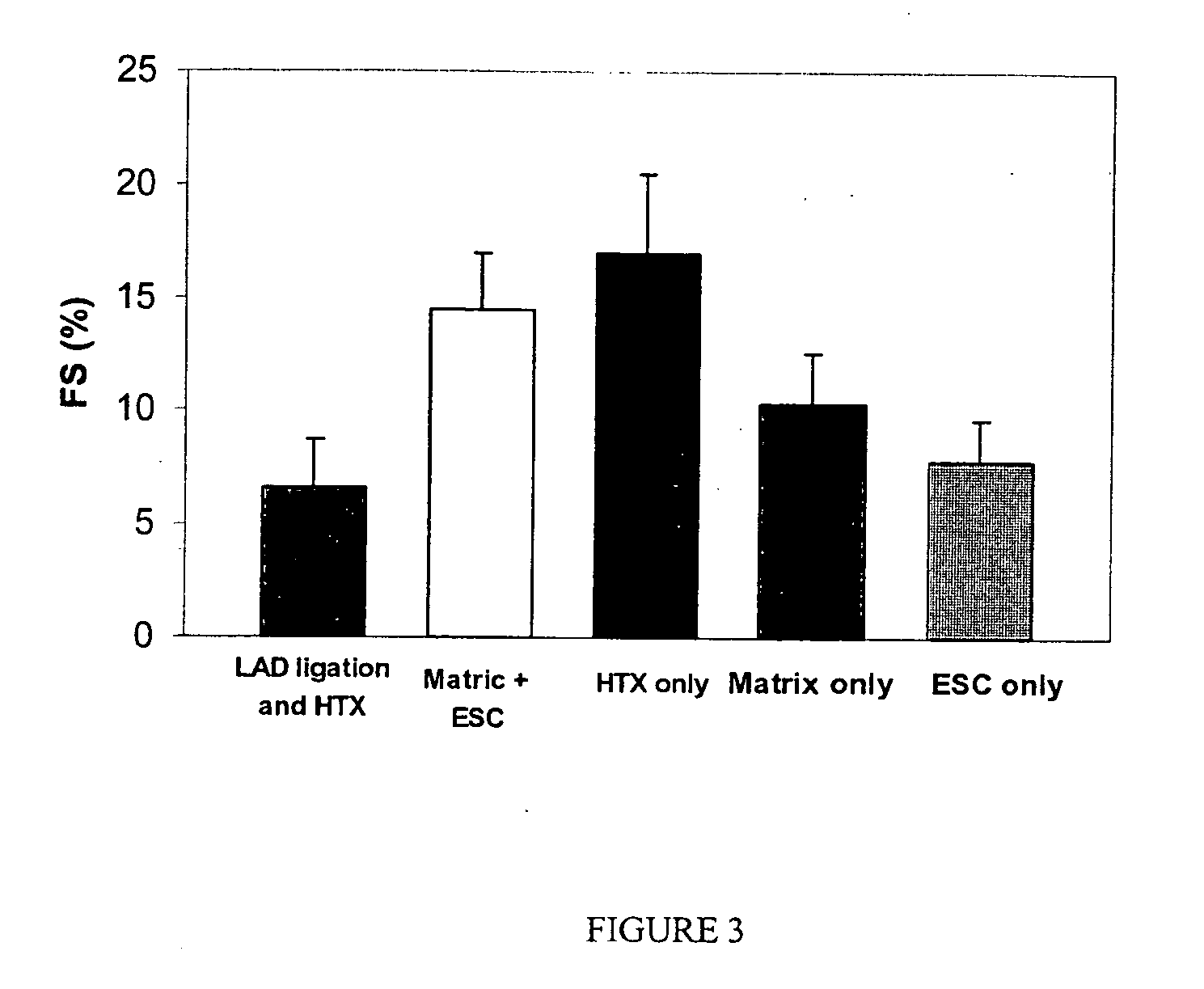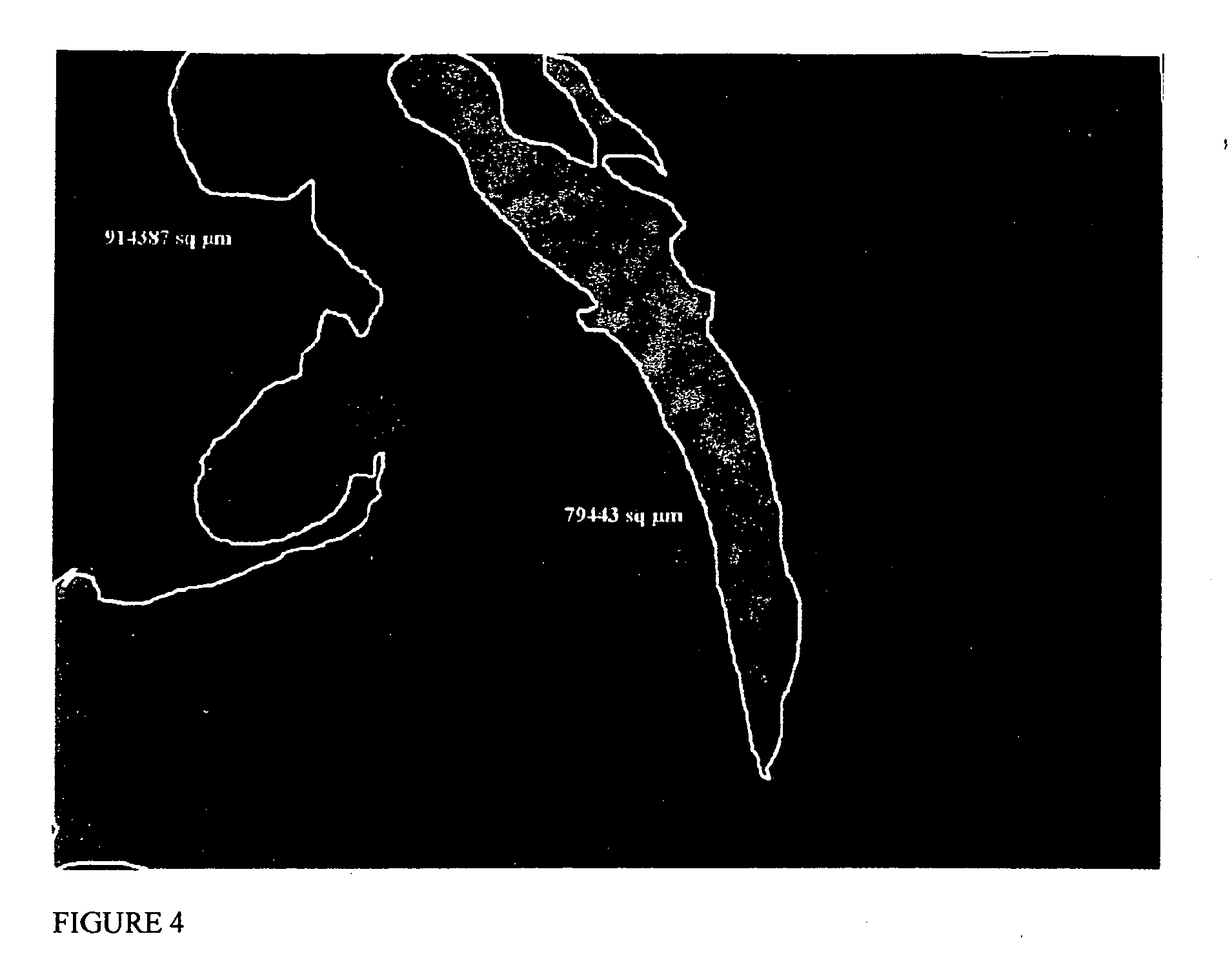Injectable bioartificial tissue matrix
a bioartificial tissue and injection technology, applied in the field of injectable bioartificial tissue matrix, can solve the problems of insufficient study of their potential to survive, differentiate in vivo, and improve organ function, and the morphological evidence of in vivo dividing and diffencing hesc that assumes the target organ-specific properties is still missing, so as to achieve the effect of not distorting the heart's architecture or structur
- Summary
- Abstract
- Description
- Claims
- Application Information
AI Technical Summary
Benefits of technology
Problems solved by technology
Method used
Image
Examples
examples
[0063] The invention will be more readily understood by reference to the following examples, which are included merely for purposes of illustration of certain aspects and embodiments of the present invention and not as limitations.
example i
Preparation and Injection of ES-Derived Cardiomyocytes into Small Animal Model of Myocardial Infarction
[0064] Undifferentiated Green Fluorescent Protein (GFP)-labeled mouse ES cells (2×106) were seeded in BD MATRIGEL matrix (BD Biosciences, Bedford Mass.). The ES cell suspension in MATRIGEL was maintained at a constant 37° C. The resulting cell suspension was the liquid bioartificial tissue.
[0065] Lewis rats (150-200 g) were used in all experimental procedures. The Lewis rat is used as a heterotopic heart transplant model. In this example, the left anterior descending coronary artery (LAD) was ligated to create an intramural left ventricular pouch (infarcted area of the myocardium). The ES cells suspended in 0.125 ml MATRIGEL were injected in the resulting infarcted area within the pouch and the suspension became solid within a few minutes after transplantation. Five recipient groups were studied: transplanted healthy hearts (Group I), infarcted control animals (Group II), matrix ...
example ii
Preparation and Introduction of ES-Derived Cardiomyocytes into a Large Animal Model of Myocardial Infarction
[0077] The ES cells are prepared as described in Example I. A suitable large animal that is routinely used to study clinical procedures used to alleviate myocardial infarction is obtained. An example of such an animal is the pig.
[0078] A pig, with a mass of between 30 and 35 kg, is anaesthetized, paralyzed, and prepared for the procedure. The LAD is ligated to create an intramural left ventricular pouch (infarcted area of the myocardium). The ES cells (between 2×106 and 109 cells) are suspended in between 0.125 ml and 1.0 ml MATRIGEL and injected in the resulting infarcted area within the pouch. Five recipient groups are studied: transplanted healthy hearts (Group I), infarcted control animals (Group II), matrix recipients alone (Group III), the study group which receives matrix plus cells (Group IV), and a group which receives ES cells alone (Group V). Two weeks later, the ...
PUM
| Property | Measurement | Unit |
|---|---|---|
| Time | aaaaa | aaaaa |
| Molar density | aaaaa | aaaaa |
| Molar density | aaaaa | aaaaa |
Abstract
Description
Claims
Application Information
 Login to View More
Login to View More - R&D
- Intellectual Property
- Life Sciences
- Materials
- Tech Scout
- Unparalleled Data Quality
- Higher Quality Content
- 60% Fewer Hallucinations
Browse by: Latest US Patents, China's latest patents, Technical Efficacy Thesaurus, Application Domain, Technology Topic, Popular Technical Reports.
© 2025 PatSnap. All rights reserved.Legal|Privacy policy|Modern Slavery Act Transparency Statement|Sitemap|About US| Contact US: help@patsnap.com



